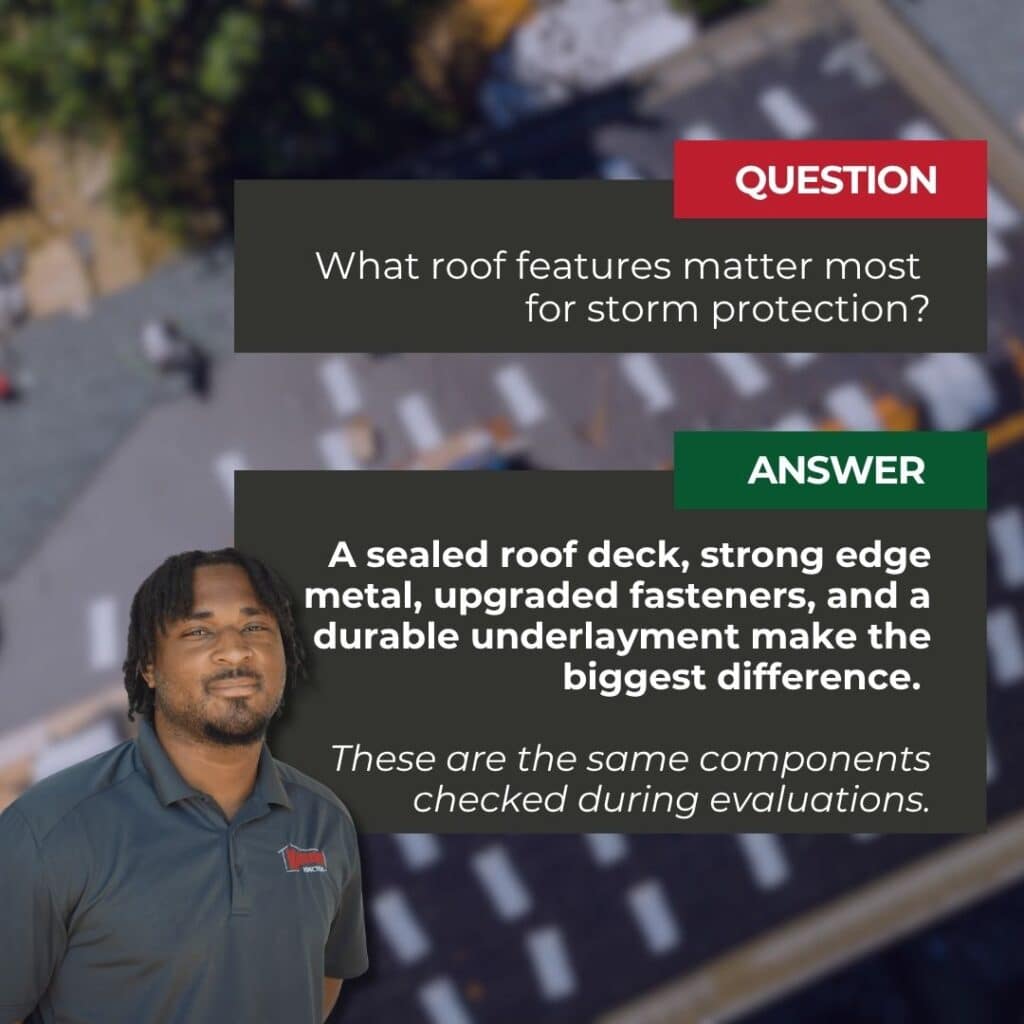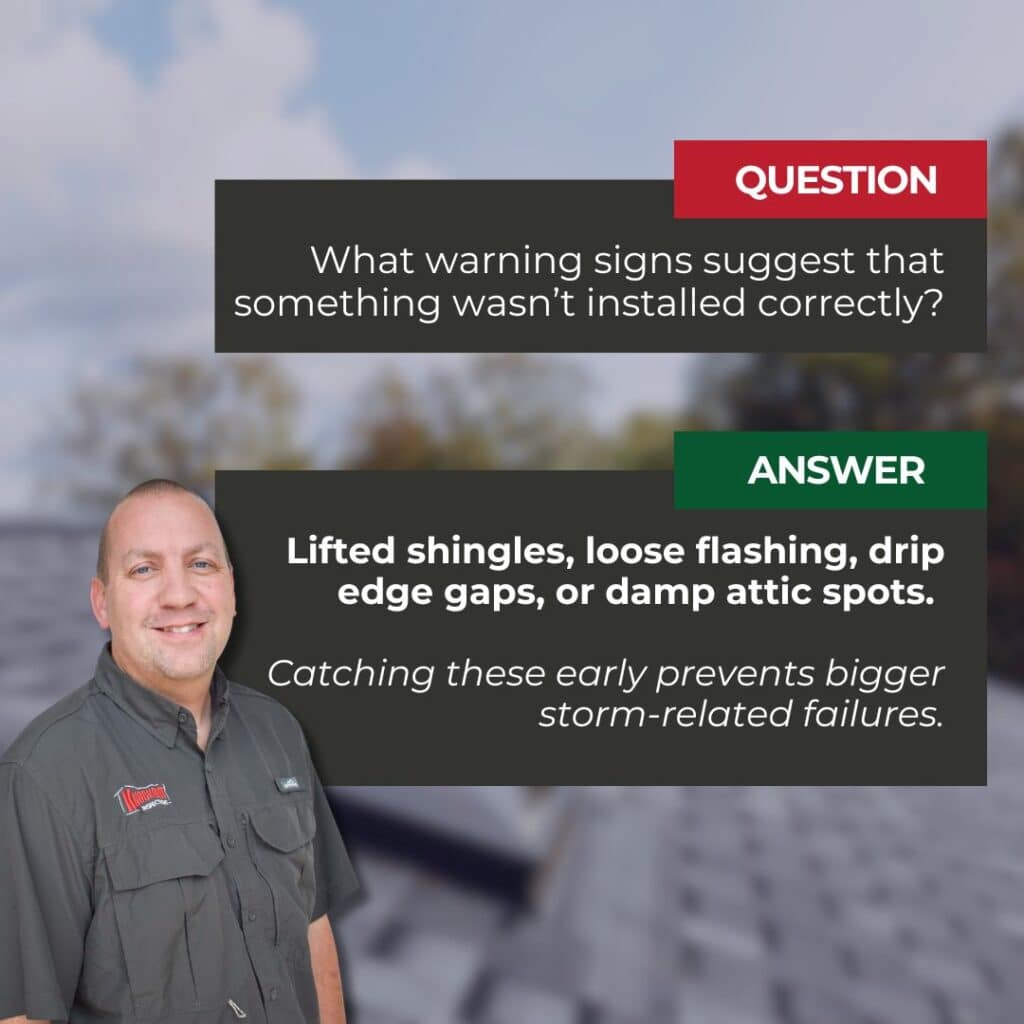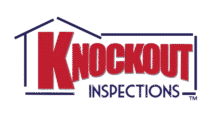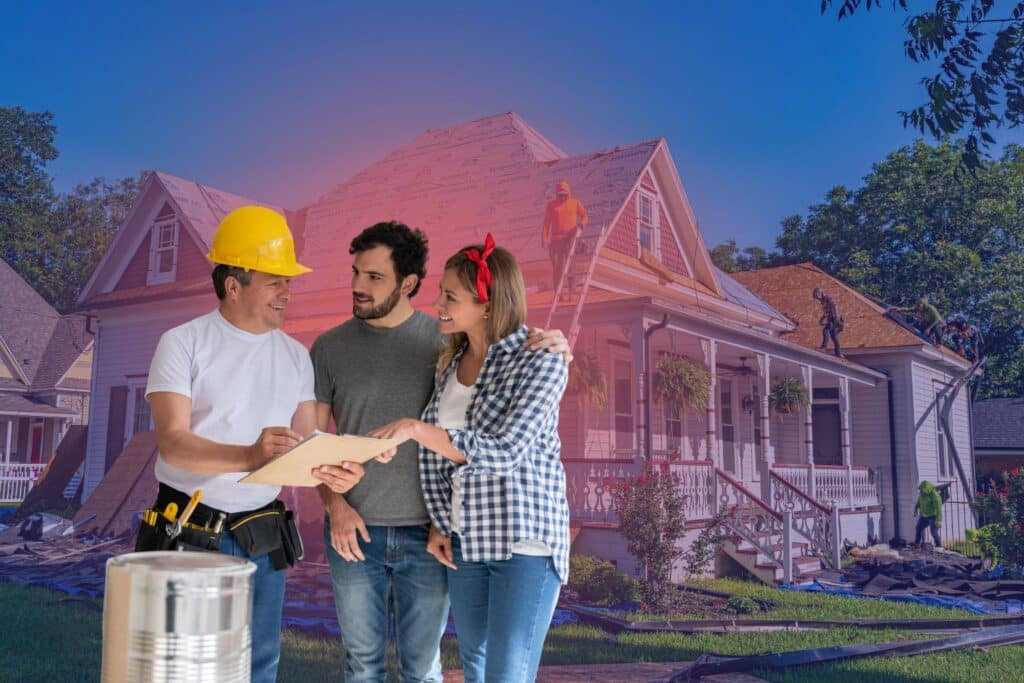On the Gulf Coast, a roof has a tougher job than it does in most parts of the country. It will face storm seasons, high humidity, and strong wind events each year. It affects your safety, insurance options, and long-term repair costs. That means knowing the right questions to ask your roofer or inspector during evaluations and improvements matters.
Many homeowners in Alabama, Florida, Louisiana, and Mississippi are also choosing FORTIFIED roofing to reduce storm damage and support insurance requirements. But a roof only performs well if the contractor follows the correct steps and uses the right materials.
Knockout Inspections works across the Gulf Coast region to help homeowners verify roofing work and document the details needed for FORTIFIED evaluations. Here are the questions we would personally advise you to consider!
Why Asking the Right Questions Matters
The Gulf Coast is one of the most weather-challenged regions in the United States. NOAA data shows the Atlantic basin averages about twenty named storms each year.
Even when storms do not make landfall, homes in coastal states experience some of the highest wind pressures, salt exposure, and moisture levels.
These conditions stress roofing systems through:
• Wind uplift
• Decking failure
• Water intrusion
• Edge metal pull off
• Shingle blow off
• Fastener corrosion
• Underlayment damage
FORTIFIED roofing focuses on preventing these failures. But if the roofer skips steps, uses the wrong fasteners, or does not properly seal the deck, the roof may not qualify.
Asking clear questions early prevents surprises and ensures that the work meets the standards needed across Alabama, Florida, Louisiana, and Mississippi.

Smart FORTIFIED Questions to Ask Before Hiring a Roofer
These questions help you understand the roofer’s experience, materials, and process before work begins.
1. Are you experienced with FORTIFIED Roof requirements?
A roofer should be able to explain:
• How a sealed roof deck works
• What nail patterns are required
• Which underlayments meet FORTIFIED guidelines
• How drip edge and flashing must be installed
• How documentation is completed for certification
If they cannot explain these parts clearly, the roof may not have a good inspection. FORTIFIED is not a style or brand. It is a construction standard that must be followed step by step.
2. Do you work with a certified FORTIFIED evaluator?
To earn a FORTIFIED designation, an evaluator must verify:
• Photographs of each construction stage
• Decking fastener patterns
• Underlayment installation
• Material types and labels
• Flashing and drip edge placement
The evaluator is not the roofer. They are a separate, trained professional who confirms that every part of the installation meets FORTIFIED rules. Knockout Inspections provides this service throughout the Gulf Coast region.
3. What materials do you use to meet FORTIFIED standards?
Ask the roofer to go over material types like:
• Nail gauge and length
• Shingle or metal roof ratings
• Underlayment type
• Tape or membrane for deck sealing
• Fasteners for drip edge
This should match the materials approved in the current FORTIFIED checklist. A roofer who hesitates or offers only vague details may not be familiar with the required materials.
4. How do you handle the sealed roof deck?
A sealed roof deck is one of the most important FORTIFIED features. It helps prevent water from entering the home if shingles come off in high winds.
A roofer should be able to explain these sealing methods:
| Method | What It Involves |
| Tape Only | A full layer of peel-and-stick membrane |
| Full Membrane | Underlayment is installed in overlapping layers to block water entry |
| Two Layer System | Underlayment installed in overlapping layers to block water entry |
If they cannot explain these clearly, they may not follow the method correctly.
5. Can I see photos of past work in the Gulf Coast region?
Roofing in the Gulf Coast is different from roofing in mild inland climates. Wind uplift, humidity, and salt exposure all change how long materials last.
Ask to see:
• Before and after photos
• Deck sealing photos
• Drip edge installation photos
• Previous FORTIFIED documentation
This gives proof that the roofer understands the region’s building demands.
6. How do you prepare the home for storms during the job?
The Gulf Coast’s sudden weather changes require extra preparation.
A qualified roofer should:
• Seal open decking before stopping for the day
• Secure loose materials
• Monitor weather patterns
• Protect any exposed wood
• Keep the roof watertight even mid-project
Storm preparation is part of good coastal roofing. If they cannot outline this, you may face leaks or wood swelling.

Smart Questions to Ask During the Project
These questions help you stay informed and ensure the roofer and evaluator remain aligned.
7. Are you photographing each step for FORTIFIED documentation?
FORTIFIED certification requires photos at every stage. Missing photographs can lead to rejection, even if the roof was installed correctly.
Ask the roofer and evaluator to confirm:
• Deck fastening photos
• Tape and underlayment photos
• Drip edge photos
• Shingle starter course photos
• Ridge installation photos
Early reminders prevent missing documentation.
8. Is the drip edge installed according to FORTIFIED guidelines?
Improper drip edge installation is one of the top reasons FORTIFIED roofs fail inspection.
A correct installation includes:
• Minimum width that meets requirements
• Fasteners spaced correctly
• Underlayment installed over the drip edge at the eaves
• Drip edge installed over the underlayment at the rakes
This placement helps shed water rather than trap it.
9. Are you using the correct nailing pattern?
FORTIFIED requires enhanced fastening. This often means:
• More nails per shingle
• Proper nail length
• Nails driven flush
• Fasteners installed into the decking, not gaps
If the roofer is uncertain, request clarification from the evaluator.
10. How will you protect attic ventilation during the upgrade?
Ventilation affects:
• Roof temperature
• Moisture control
• Shingle life
Some roofers accidentally block ridge vents or soffit vents during installation. Ask how they prevent this, especially in humid coastal climates where moisture builds quickly.

Smart Questions to Ask After the Job Is Complete
Before final payment, confirm these items.
11. Will I receive a full set of FORTIFIED documentation?
The roofer or evaluator should provide:
• Photographs
• Material lists
• Installation details
• FORTIFIED certificate, if approved
This documentation helps with insurance savings and resale value.
12. What is covered under your workmanship warranty?
Warranties vary, so you should ask what is included. Do they cover:
• Leak coverage
• Material failures
• Labor defects
• Wind damage coverage limits
A good roofer explains this clearly without confusion.
What Makes the Gulf Coast Region Unique
Across Alabama, Florida, Louisiana, and Mississippi, roofs face:
• High humidity
• Frequent storms
• Strong wind gusts
• Salt exposure near the coast
• Fast-changing weather
These factors shorten roof life if the installation is not done properly. Many roofs in this region fail from wind-driven rain entering through small openings. FORTIFIED methods help prevent these common issues, but only when the contractor follows the full process.
Related Questions
What other home features benefit from FORTIFIED improvements?
Areas like attic ventilation, soffit installation, and roof deck integrity all affect storm resistance. These topics often connect to home inspection reports and roof upgrade recommendations.
How do inspectors document roof defects for insurance or real estate needs?
Inspectors can identify missing flashing, improper ventilation, and fastener issues. These findings often support repair requests or help plan upgrades before listing the home.
What issues in other parts of the home can signal early roof problems?
Stains on ceilings, warped trim, and attic moisture can point to ventilation or roof covering issues. These topics connect well with other inspection services like attic reviews and moisture checks.
What should homeowners schedule after a major storm?
A post-storm inspection helps catch loose shingles, lifted flashing, or damaged soffits early. This relates to storm readiness and seasonal maintenance content.
When to Call a Professional
Call a professional if you:
• Are replacing your roof and want to meet FORTIFIED standards
• Need documentation for insurance savings
• Want a clear evaluation of storm-related roof damage
• Are unsure whether your roofer is following the correct steps
• Need a certified evaluator to verify work for the FORTIFIED Roof Program
A qualified home inspector or certified FORTIFIED evaluator helps confirm that the installation follows the right process, protects your home, and supports any insurance benefits available in the Gulf Coast region.
Conclusion
A strong roof starts with strong questions. When you live in a storm-prone region, you cannot assume all roofers follow the extra steps needed to meet FORTIFIED standards.
Asking the questions in this guide helps you understand the roofer’s skill level, the materials they use, and whether your home is being protected the right way.
For homeowners across Alabama, Florida, Louisiana, and Mississippi, choosing a roofer who understands coastal conditions is one of the best ways to prevent water intrusion and storm damage.
If you are planning a roof replacement or want to confirm that your roof meets FORTIFIED requirements, get in touch with the Knockout team to help you move forward with confidence.

